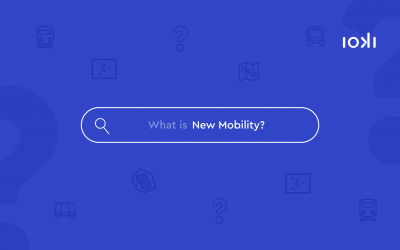Poor connections, long waiting times, uncomfortable transport
In the countryside, the car is still the number one means of transport, although it is neither cheap nor environmentally friendly. Bus and train connections and the associated timetable are often not designed to meet demand and are not flexible enough. A lack of direct connections, large gaps in the timetable and excessively long travel times characterise the image of the local transport in the countryside. This is also shown by a survey conducted by the ADAC in 2018, in which 60% of those questioned stated that they considered rural areas to be left behind in mobility issues. 49% of those questioned say that direct connections from A to B are poor. 47% say that destinations are not reasonably close by.
Improvements in public transport in rural areas can cause people to rethink and encourage them to use public transport more often. However, this is a major challenge for transport planners due to low population density, different destinations, travel times and a weak mobility infrastructure. All these factors mean that it is much more difficult to achieve a high capacity utilisation of public buses in rural areas. At the same time, however, one of the key requirements of public transport is that it should enable mobility everywhere, at all times and for everyone, even completely independent of their own car.
Individually tailored mobility offer
One thing above all applies: mobility is a fundamentally individual phenomenon. What can be the solution in the city may be useless in the country. Therefore, the requirements for mobility solutions must always be tailored to the needs of the local user.
Similarly, in times of increased cost pressure, new solutions must be designed as profitably and efficiently as possible and evaluated in terms of their economic and ecological impact. This allows new forms of mobility to be optimally integrated into the existing transport system and gaps in transport planning to be closed. Based on a mobility analysis, for example, on-demand solutions can be guaranteed for everyone – regardless of their place of residence. A dynamic vehicle system can be used via app or telephone, without fixed timetables or routes. This results in digital and barrier-free on-demand traffic. However, the digitalization of the current mobility offer not only improves access to the current mobility offer, but also its cost-effectiveness. Vehicles only start moving when there is a real need.
Improved quality of life through modern public transport
Mobility means much more than just getting from A to B. Mobility means independence. The quality of public transport plays an essential role in deciding where we live, work, shop and spend our free time. In the end, a solid and modern mobility infrastructure means more quality of life. On-demand solutions can help to establish such a modern mobility infrastructure and thus sustainably improve the quality of life of people in rural areas and cost-efficiently expand public transport services.



